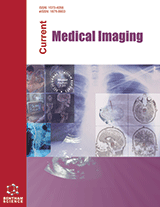
Abstract
Background and Aims: In the midst of this pandemic, planning the prioritization of hospital admissions for patients affected with COVID-19 should be of prime concern, particularly in healthcare settings with limited resources. Thus, in this study, we aimed to develop a novel approach to triage COVID-19 patients and attempt to prioritize their hospital admission using Lung Ultrasonography (LUS). The efficacy of LUS in triaging suspected COVID-19 patients and assessing the severity of COVID-19 pneumonia was evaluated; the findings were then compared with those obtained by chest computed tomography (CT).
Methods: This multicenter, cross-sectional study comprised 243 COVID-19 patients who presented to the emergency department in 3 major university hospitals in Egypt. LUS was performed by an experienced emergency or chest physician, according to the local protocol of each hospital. Demographic, clinical, and laboratory data were then collected from each patient. Each patient was subjected to chest CT scans and LUS.
Results: The mean age of the 243 patients was 46.7 ± 10.4 years. Ground-glass opacity, subpleural consolidation, translobar consolidation, and crazy paving were reported in the chest CT scans of 54.3%, 15.2%, 11.1%, and 8.6% of the patients, respectively. B-line artifacts were observed in 81.1% of the patients (confluent pattern, 18.9%). The LUS findings completely coincided with the CT findings (Kappa agreement value, 0.77) in 197 patients (81.1%) and offered a diagnostic sensitivity of 74%, diagnostic specificity of 97.9%, positive predictive value of 90.2%, and negative predictive value of 93.6% for the COVID-19 patients. Following the addition of O2 saturation to the lung imaging findings, the ultrasound method was able to demonstrate 100% sensitivity and specificity in accurately differentiating between severe and non-severe lung diseases.
Conclusion: LUS with oxygen saturation might prove to be effective in prioritizing the hospital admission of COVID-19 patients, particularly in healthcare settings with limited resources.
Keywords: COVID-19, lung, ultrasound, triage, oxygen, pneumonia.
 12
12












